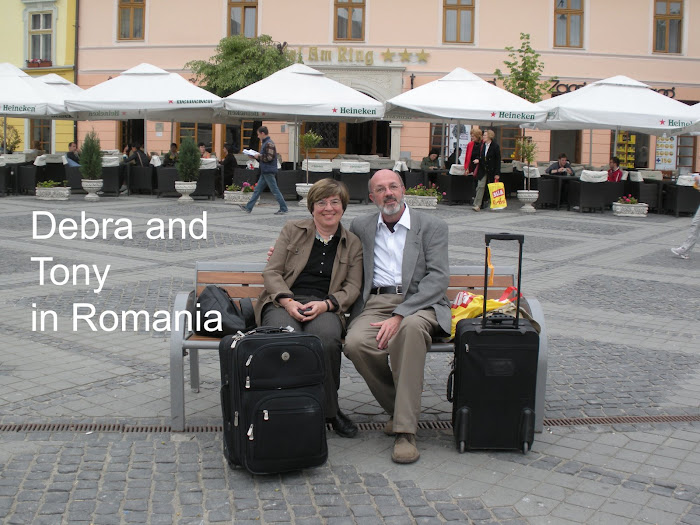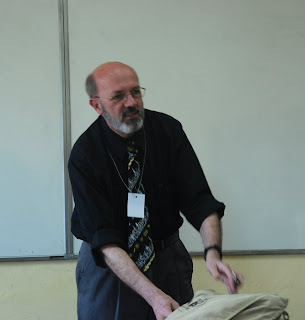 The building itself (hard to photograph because it sits right on a narrow street).
The building itself (hard to photograph because it sits right on a narrow street).This is the first [!] in a series about my Favorite Timisoara Buildings (FTB).
This is the Banca de Scont (Discount Bank), the first building in Timisoara I really fell in love with. I actually remembered this building from earlier visits to Timisoara (2002 and 2004), but it wasn't til this trip that I tried to figure out why I liked it so much.
First, it reminds me (weird though this sounds) of Santa Fe pueblo architecture (soft, curvy and brown like adobe architecture, plus lots of turquoise). Of course, this only begs the question of why I like Santa Fe pueblo architecture so much, but that is a story for another blog. Second, it is just so unexpected. Who would have ever imagined finding a building like this just off a baroque plaza in a Romanian city? Third, I have actually discovered something about it and its architects.
It was designed by Marcell Komor and Dezso Jakab and built between 1906 and 1908. Komor and Jakab were students of Odon Lechner. They also designed the City Hall and Palace of Culture in Targu Mures (which we are going to see next week; its my birthday present from my husband!) and the Black Eagle complex in Oradea ((which I also hope to see).
This is from the online Jewish Virtual Library:
JAKAB, DEZSÖ (1864–1932) and KOMOR, MARCELL (1868–1944), Hungarian architects, designers of synagogues, nursing homes, public buildings, and private villas. Their major projects, situated outside Hungary's present borders, include the synagogue of Subotica (Szabadka), Yugoslavia, the municipality building of Tirgu Mures (Marosvásárhely), Romania, and a concert hall in Bratislava, Czechoslavakia. In partnership they built the Erkel theater in Budapest according to the plans of G. Markus (1872–1912), another Jewish architect of the Secessionist era. Komor was a victim of the Holocaust.
According to Art Nouveau in Romania by Ada Stefanut (the one useful book I could actually get my hands on), "It was thanks to [Komor and Jakab] that the Hungarian version of Art Nouveau spread through the Carpathian basin." The Hungarian Secessionist features include "decorative details that reveal a focus on specificity of the place," including "ornamental motifs drawn from the local crafts." It's also noteworthy for the organic, curved walls and the amazing grillwork, including the lovely iron gutters.

















































.jpg)
